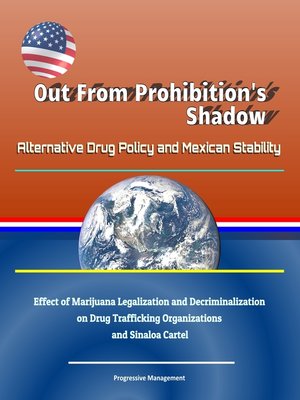Out From Prohibition's Shadow
ebook ∣ Alternative Drug Policy and Mexican Stability--Effect of Marijuana Legalization and Decriminalization on Drug Trafficking Organizations and Sinaloa Cartel

Sign up to save your library
With an OverDrive account, you can save your favorite libraries for at-a-glance information about availability. Find out more about OverDrive accounts.
Find this title in Libby, the library reading app by OverDrive.



Search for a digital library with this title
Title found at these libraries:
| Library Name | Distance |
|---|---|
| Loading... |
This mid-2018 report has been professionally converted for accurate flowing-text e-book format reproduction. The purpose of this study is twofold: to determine the success of alternative drug policy and to provide a foundation for better assessment of drug policy success in promoting stability. Mexico has the world's most lucrative drug trafficking corridor. Decades of militarized prohibitionist drug eradication and interdiction have destabilized Mexico and have actually contributed to its favorable drug trafficking environment. However, alternative drug policies may offer a shift from this vicious circle. In light of this, this study pursues this question: How do North American alternative drug control policies affect Mexican stability?
The problem is complex. I focus particularly on the effects of marijuana legalization and drug decriminalization on Mexican stability. I use an incentives-based systems approach to the actors involved and incorporate the factors of geopolitics, political decentralization, free-market capitalism, and complex interdependence to develop a foundation for a more comprehensive analysis. I find that the Sinaloa cartel has been the most affected by legalization, and that legalization has potentially made organized crime less profitable in general. Alternative drug policies do indeed affect Mexican stability, but the effects vary significantly. The United States and Mexico should focus efforts on developing a model for more comprehensive analysis on complexities of the illicit environment.
The first chapter has provided theoretical frameworks for stability, DTO behavior, the dynamics of international power relationships, and why they are pertinent to counternarcotics policy. Chapter II applies these frameworks to Mexico specifically. It describes the interrelationship of past prohibition policy, DTO and drug enforcement behaviors, and resulting instability in the context of Mexico's evolving geopolitical and political economic environments. Chapter III identifies the possible behavioral shifts of DTOs and drug enforcement authorities caused by the alternative policies of legalization and decriminalization. It incorporates its findings on policy-behavior dynamics into the context of the dynamic web of policy-behavior interactions identified in Chapter II in development of a drug policy-behavior model for analysis.
Chapters IV and V are the quantitative portion of my analysis. Chapter IV quantitatively examines the alternative policy-related behaviors identified in Chapter III. In turn, this also provides a basis for Chapter V's quantitative instability analysis. Chapter V analyzes the correlation between alternative policy-driven behaviors and instability through the use of quantitative indicators. Finally, Chapter VI, the concluding chapter, offers implications for this research, particularly the need for a regionally-aligned "net stability assessment" as a metric for policy success. It also details the limitations of this study and offers recommendations for its utilization, expansion, and refinement.







